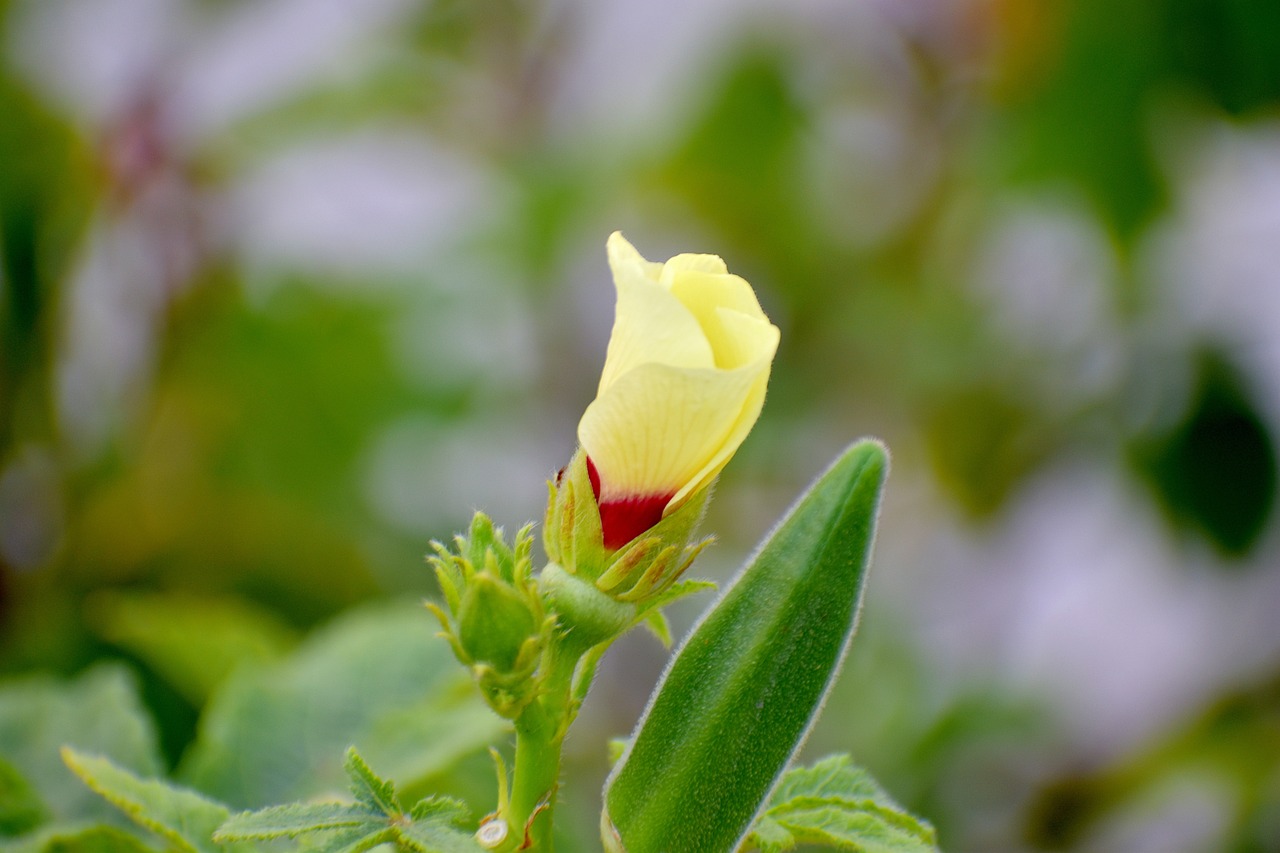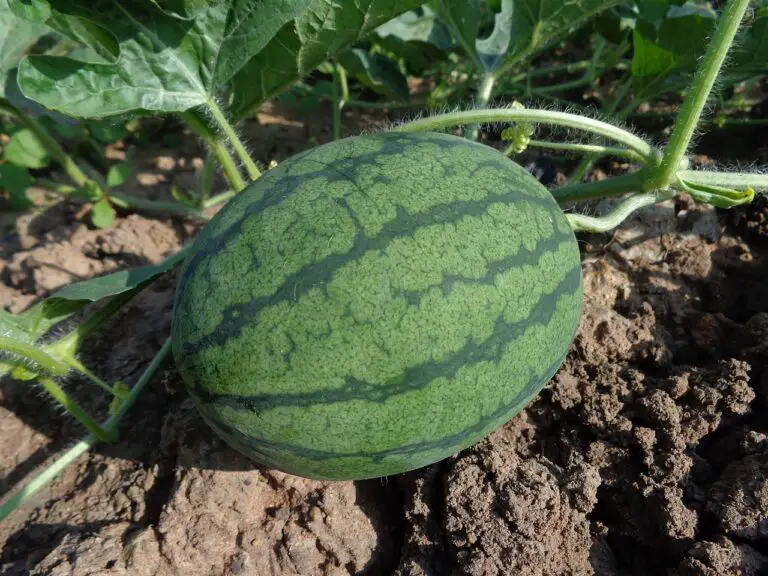10 Tips To Increase Fruit Production On Okra

Okra, also known as ladyfinger or bhindi, is a versatile and nutritious vegetable that is a staple in many cuisines worldwide. Cultivating okra can be a rewarding experience, but maximizing fruit production requires careful attention to various factors. Whether you are a seasoned gardener or a novice, these ten tips will help you enhance your okra yield and enjoy a bountiful harvest.
10 Tips to Increase Fruit Production on Okra
1. Selecting the Right Variety
Choosing the appropriate okra variety for your climate and soil conditions is crucial for successful cultivation. Different varieties have distinct growth habits, disease resistance, and adaptability to specific environments. Conduct thorough research and select a variety that suits your local conditions for optimal fruit production.
Selecting the right okra variety is essential for success. Consider factors such as your local climate, soil type, and available space. Some varieties may be more resistant to common pests or diseases prevalent in your region. Additionally, certain cultivars may be better suited for container gardening, making them ideal for urban or limited-space environments. Taking the time to choose the right variety upfront can significantly impact your overall yield and the success of your okra cultivation.
2. Proper Soil Preparation
Okra thrives in well-draining soil with a slightly acidic to neutral pH. Before planting, ensure your soil is rich in organic matter and adequately prepared. Adding compost or well-rotted manure helps improve soil structure and provides essential nutrients for okra plants. Adequate soil preparation sets the foundation for healthy plant growth and increased fruit production.
Proper soil preparation is a fundamental step in maximizing okra fruit production. Okra plants prefer loose, well-draining soil to support their extensive root systems. Additionally, incorporating organic matter into the soil enhances its fertility and water-retention capacity. Regular soil testing can help you monitor nutrient levels and adjust your fertilization strategy accordingly. By investing time and effort into preparing your soil, you create an optimal environment for okra plants to thrive and produce abundant fruits.
3. Optimal Plant Spacing
Correct plant spacing is crucial for maximizing sunlight exposure, air circulation, and overall plant health. When planting okra, adhere to the recommended spacing guidelines for the chosen variety. Proper spacing not only prevents overcrowding but also facilitates efficient nutrient uptake and reduces the risk of diseases that thrive in humid conditions.
The spacing between okra plants plays a vital role in their overall growth and fruit production. Crowded plants are more susceptible to diseases, and they may compete for sunlight and nutrients, stunting each other’s growth. On the other hand, well-spaced plants receive adequate sunlight, allowing for proper photosynthesis and energy production. Follow the guidelines provided for your specific okra variety, considering factors such as plant height and spread, to optimize spacing and promote a healthy, productive crop.
4. Appropriate Watering Techniques
Okra plants require consistent moisture throughout their growing season to produce optimal fruit yields. Establish a regular watering schedule, ensuring the soil remains consistently moist but not waterlogged. Deep watering encourages robust root development, enhancing the plant’s ability to absorb nutrients and support increased fruit production.
Watering practices significantly impact okra fruit production. Consistent moisture is essential for the development of healthy and abundant fruit. Watering deeply and infrequently is generally more effective than frequent shallow watering, as it encourages the plant to establish a deep and robust root system. Mulching around the base of the plants helps retain soil moisture, suppress weeds, and regulate soil temperature. By implementing proper watering techniques, you can create an environment that supports optimal okra growth and fruiting.
5. Implementing a Fertilization Schedule
Providing adequate nutrients is crucial for maximizing okra fruit production. Develop a fertilization schedule based on the specific needs of your okra plants. Balanced fertilizers with essential macronutrients and micronutrients promote healthy growth, strong stems, and increased flowering, leading to higher fruit yields.
Establishing a well-balanced fertilization schedule is key to supporting okra plants throughout their growth stages. Conduct soil tests to determine nutrient deficiencies and adjust your fertilizer application accordingly. Nitrogen, phosphorus, and potassium are essential nutrients for okra cultivation, with varying requirements at different growth stages. Avoid over-fertilizing, as excessive nitrogen can lead to lush foliage at the expense of fruit production. By providing the right nutrients in the right amounts, you can ensure that your okra plants have the essential elements for robust growth and abundant fruiting.
6. Regular Pruning and Thinning
Pruning and thinning okra plants contribute to improved air circulation, sunlight penetration, and overall plant vigor. Remove any damaged or diseased foliage promptly, and thin out excess plants to allow the remaining ones to channel their energy into producing more fruits. Pruning also helps manage plant height, preventing shading and promoting a more efficient use of resources.
Pruning and thinning are essential practices to maintain the health and productivity of okra plants. Regularly remove dead or yellowing leaves to prevent the spread of diseases and enhance airflow within the canopy. Thinning overcrowded plants allows for better light penetration, reducing the risk of fungal infections and promoting uniform fruit development. Additionally, pruning can help control the height of the plants, making it easier to manage and harvest the okra. By incorporating these practices, you create an environment that encourages optimal fruit production and minimizes the risk of pests and diseases.
7. Controlling Pests and Diseases
Okra plants are susceptible to various pests and diseases that can negatively impact fruit production. Implement preventive measures such as companion planting, using natural predators, and practicing good garden hygiene to minimize the risk of infestations. Regularly inspect your okra plants for signs of pests or diseases and take prompt action to address any issues.
Effectively controlling pests and diseases is essential for maintaining a healthy okra crop and maximizing fruit production. Monitor your plants regularly for signs of common pests like aphids, spider mites, and caterpillars. Introduce beneficial insects such as ladybugs or predatory beetles to naturally control pest populations. Cultural practices, such as rotating crops and maintaining proper plant spacing, can help prevent the buildup of diseases in the soil. If necessary, use organic or chemical treatments as a targeted and controlled intervention. By staying vigilant and implementing proactive measures, you can safeguard your okra plants from potential threats and ensure a productive harvest.
8. Utilizing Companion Plants
Companion planting involves strategically placing compatible plants near each other to enhance growth and repel pests. Incorporating companion plants with okra can create a synergistic environment that supports increased fruit production. Marigolds, for example, are known to deter nematodes, while basil can help repel certain insects that may affect okra plants.
Strategically utilizing companion plants is a sustainable and natural way to boost okra fruit production. Research and choose companion plants that complement the growth habits and nutrient needs of okra. Marigolds, with their pest-repelling properties, can help protect okra from nematodes. Basil, when planted nearby, can act as a natural insect deterrent. Additionally, companion plants can enhance soil fertility through nutrient exchange and improve overall garden biodiversity. By harnessing the benefits of companion planting, you create a more resilient and productive ecosystem for your okra crop.
9. Timing of Planting
The timing of planting plays a crucial role in the success of okra cultivation. Planting okra when the soil has warmed to the appropriate temperature ensures rapid germination and robust early growth. Consider the average date of the last frost in your region and aim to plant okra shortly thereafter. This timing allows the plants to establish themselves before the onset of extreme heat, leading to better overall productivity.
Timing is everything when it comes to planting okra for maximum fruit production. Okra is sensitive to cold temperatures, so it’s essential to wait until the soil has sufficiently warmed before planting. Planting too early can lead to poor germination and slow growth. On the other hand, planting too late may result in reduced yields due to a shorter growing season. Understanding your local climate and the specific requirements of okra plants will help you determine the optimal time to plant, setting the stage for a successful harvest.
10. Harvesting Practices
Harvesting okra at the right time is crucial for encouraging continuous fruit production. Okra pods should be harvested when they are young and tender, typically 3 to 4 inches in length. Regular harvesting not only provides you with a continuous supply of fresh okra but also stimulates the plants to produce more flowers and fruits. Check your okra plants regularly and harvest mature pods promptly to encourage the development of new ones.
Proper harvesting practices contribute to the sustained production of okra throughout the growing season. Harvesting young and tender pods ensures optimal flavor and tenderness, making them more desirable for culinary use. Regularly picking mature pods prevents the plant from diverting energy into seed development, encouraging the continuous production of new flowers and pods. Incorporate harvesting into your routine to enjoy a steady supply of fresh okra and promote ongoing fruit development in your garden.
Conclusion
By implementing these ten tips, you can enhance the fruit production of your okra plants and enjoy a more abundant harvest. From selecting the right variety to practicing proper harvesting techniques, each step plays a crucial role in creating an optimal environment for okra cultivation. Whether you are a novice gardener or an experienced horticulturist, incorporating these strategies into your okra-growing routine will contribute to a successful and rewarding gardening experience.






